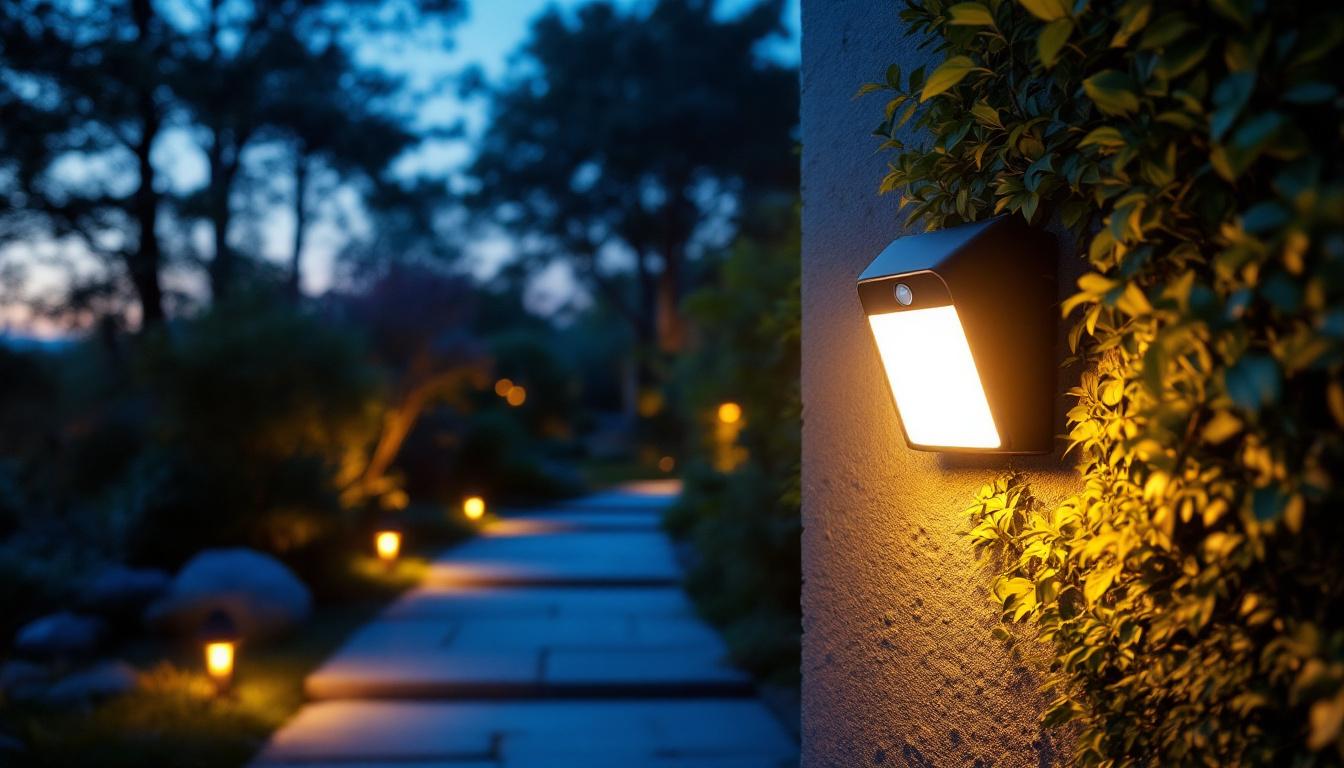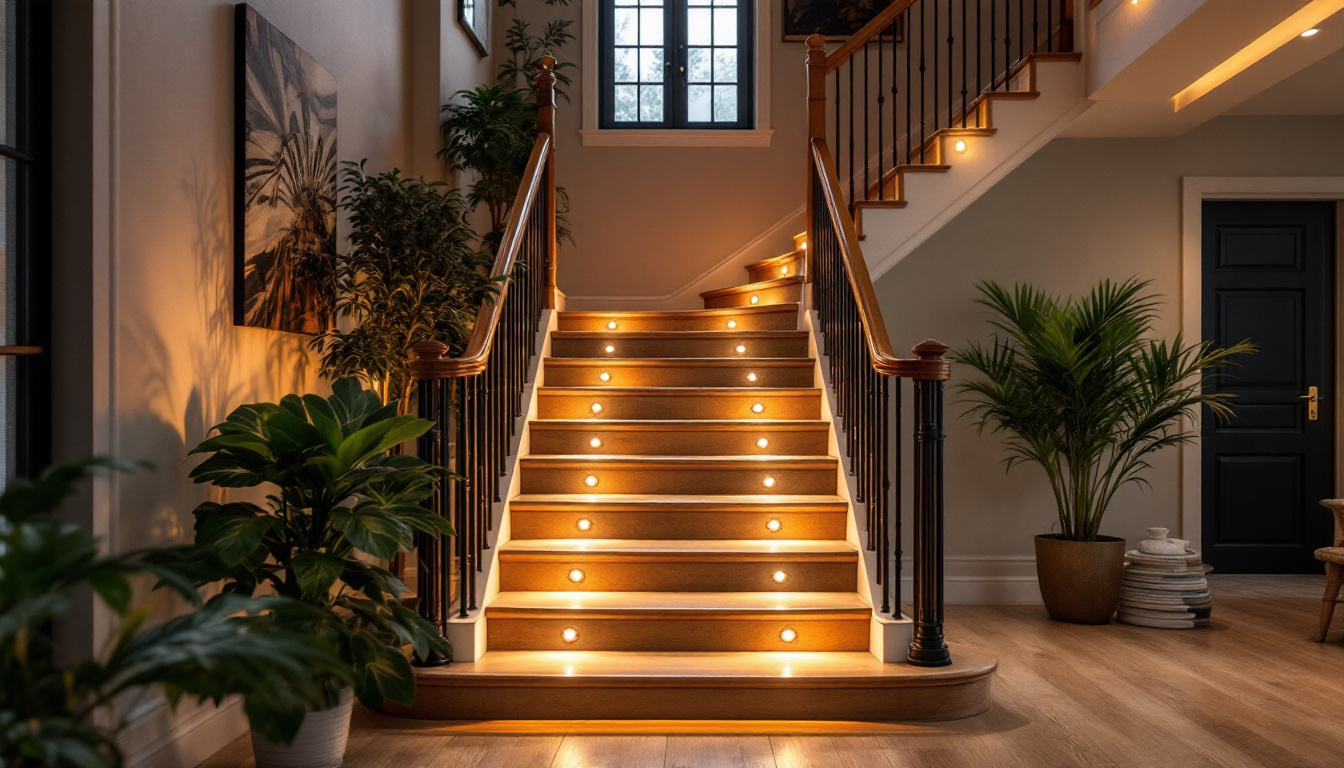
In the realm of modern lighting solutions, outdoor motion sensors have emerged as a pivotal technology. These devices not only enhance security but also contribute to energy efficiency and convenience in residential and commercial settings. By detecting movement and automatically activating lights, they provide a seamless integration of functionality and safety. The ability to illuminate pathways, driveways, and entryways when someone approaches not only deters potential intruders but also ensures that residents and visitors feel safe navigating outdoor spaces after dark.
For lighting contractors, understanding the intricacies of outdoor motion sensors is essential. This knowledge not only aids in selecting the right products for clients but also ensures proper installation and integration with existing lighting systems. Familiarity with various sensor types—such as passive infrared, microwave, and dual technology sensors—enables contractors to tailor solutions that best meet the specific needs of each environment. Additionally, awareness of factors like sensor range, sensitivity settings, and the potential for false triggers due to environmental elements like wind or animals can significantly enhance the effectiveness of these systems.
Moreover, the integration of smart technology into outdoor motion sensors has revolutionized their functionality. Many modern sensors can now connect to home automation systems, allowing users to control their outdoor lighting remotely via smartphone apps. This not only adds a layer of convenience but also enables homeowners to receive alerts when motion is detected, providing real-time updates on their property’s security status. The ability to customize settings, such as adjusting the sensitivity or scheduling lighting times, further empowers users to optimize their outdoor lighting experience while maximizing energy savings.
As energy consumption becomes an increasingly important consideration for both consumers and businesses, outdoor motion sensors play a crucial role in reducing unnecessary electricity use. By ensuring that lights are only activated when needed, these sensors help in lowering utility bills and minimizing the carbon footprint associated with outdoor lighting. This eco-friendly approach aligns well with the growing trend toward sustainable living, making outdoor motion sensors not just a practical choice, but a responsible one as well.
Outdoor motion sensors primarily utilize two types of detection mechanisms: passive infrared (PIR) and microwave sensors. PIR sensors detect changes in infrared radiation, which is emitted by warm bodies, while microwave sensors emit microwave pulses and measure the reflection off moving objects. Both technologies have their unique advantages, making them suitable for different applications.
PIR sensors are widely favored for their reliability and lower energy consumption. They are ideal for areas where human or animal movement is expected. In contrast, microwave sensors can cover larger areas and penetrate obstacles, making them suitable for more complex environments.
When installing outdoor motion sensors, several factors must be considered to optimize performance. The placement of the sensor is crucial; it should be positioned to cover the desired area without obstructions. Additionally, the height at which the sensor is mounted can significantly affect its detection range.
Lighting contractors should also take into account the angle of detection. Most sensors have a specific field of view, and understanding this can help in strategically placing multiple sensors to ensure comprehensive coverage. Moreover, ensuring that the sensors are weatherproofed and suitable for outdoor use is essential for longevity and reliability.
One of the primary benefits of outdoor motion sensors is the enhanced security they provide. By illuminating areas when movement is detected, these sensors deter potential intruders and create a safer environment. This is especially important for homes and businesses located in areas with higher crime rates.
Moreover, the presence of lights that automatically turn on can give the impression that a property is occupied, further discouraging criminal activity. For lighting contractors, recommending motion sensor lights can be a valuable selling point for clients concerned about safety.
Energy efficiency is another significant advantage of outdoor motion sensors. Traditional outdoor lighting systems often remain on for extended periods, leading to unnecessary energy consumption. In contrast, motion sensors ensure that lights are only activated when needed, significantly reducing energy costs.
For clients looking to minimize their carbon footprint or reduce utility bills, incorporating motion sensors into outdoor lighting designs can be an effective solution. This not only appeals to environmentally conscious consumers but also aligns with the growing trend of sustainable living.
Outdoor motion sensors also offer unparalleled convenience. Homeowners and business operators can enjoy the ease of automated lighting without the need for manual switches. This is particularly beneficial in areas like driveways, walkways, and entry points, where individuals may have their hands full or be preoccupied.
Additionally, many modern motion sensors come equipped with smart technology, allowing for integration with home automation systems. This means lights can be controlled remotely, scheduled, or even connected to security cameras, providing a comprehensive solution for modern lighting needs.
Despite their numerous advantages, outdoor motion sensors are not without challenges. One common issue is false triggering, which can occur due to environmental factors such as wind, rain, or passing animals. This can lead to unnecessary lighting activation, causing inconvenience and increased energy usage.
To mitigate this, contractors should recommend sensors with adjustable sensitivity settings. This allows users to customize the detection range and minimize false alarms. Additionally, installing sensors in locations less prone to disturbances can help enhance their reliability.
Another consideration for lighting contractors is the integration of motion sensors with existing lighting systems. Ensuring compatibility with various types of fixtures and controls can be challenging. It is essential to evaluate the current electrical setup and recommend sensors that can seamlessly integrate without requiring extensive modifications.
Contractors should also educate clients on the potential need for additional components, such as relays or transformers, to facilitate proper operation. This proactive approach can prevent installation complications and ensure a smooth transition to automated lighting solutions.
When selecting outdoor motion sensors, contractors should consider the specific needs of their clients and the environment in which the sensors will be installed. Various types of sensors are available, each designed for different applications. For example, floodlight motion sensors are ideal for illuminating large areas, while wall-mounted sensors are suitable for entryways and patios.
Additionally, some sensors are designed for specific environments, such as those that are resistant to extreme weather conditions or those that can operate in low-light situations. Understanding these distinctions can help contractors recommend the most appropriate solutions for their clients.
In addition to the type of sensor, several features should be considered when choosing outdoor motion sensors. Look for models with adjustable detection ranges, customizable light duration settings, and the ability to integrate with smart home systems. These features enhance the functionality and user experience, making them more appealing to clients.
Furthermore, energy efficiency ratings and warranty offerings are crucial factors to consider. A product with a robust warranty can provide peace of mind to clients, while energy-efficient models can contribute to long-term cost savings.
Before installation, conducting a thorough site assessment is vital. This involves evaluating the area where the motion sensor will be installed, identifying potential obstacles, and determining the optimal placement for maximum coverage. Understanding the layout of the property and identifying high-traffic areas can significantly enhance the effectiveness of the sensors.
Contractors should also consider the environmental factors that may impact sensor performance, such as nearby trees, shrubs, or structures that may obstruct the sensor’s field of view. Taking the time to assess the site can lead to more successful installations and satisfied clients.
Once installed, thorough testing and calibration of the motion sensors are essential. This process ensures that the sensors are correctly detecting motion and activating the lights as intended. Adjustments may be necessary to fine-tune sensitivity settings, detection angles, and light duration.
Additionally, educating clients on how to operate and adjust their motion sensors can empower them to make the most of their lighting solutions. Providing clear instructions and demonstrating the features can enhance user satisfaction and reduce the likelihood of issues arising post-installation.
As technology continues to evolve, outdoor motion sensors are becoming increasingly sophisticated. Innovations such as artificial intelligence and machine learning are paving the way for smarter sensors that can differentiate between types of movement, reducing false triggers and enhancing security.
Moreover, the integration of motion sensors with IoT (Internet of Things) devices is transforming outdoor lighting solutions. This connectivity allows for real-time monitoring and control, enabling users to manage their lighting systems remotely and receive alerts about potential security breaches.
The demand for outdoor motion sensors is on the rise, driven by a growing emphasis on home security and energy efficiency. Lighting contractors should stay informed about market trends and emerging technologies to remain competitive and provide clients with cutting-edge solutions.
Furthermore, as consumers become more eco-conscious, the push for sustainable lighting solutions will likely continue to influence the development of outdoor motion sensors. Contractors who can offer energy-efficient options will be well-positioned to meet the needs of environmentally aware clients.
Outdoor motion sensors play a crucial role in modern lighting solutions, offering enhanced security, energy efficiency, and convenience. For lighting contractors, understanding the various types of sensors, their benefits, and installation best practices is essential for delivering effective solutions to clients.
As technology advances and market demands evolve, staying informed about the latest trends and innovations will empower contractors to provide cutting-edge services. By embracing the potential of outdoor motion sensors, lighting professionals can contribute to safer, more efficient, and smarter outdoor environments.
Ready to elevate your lighting solutions with the latest outdoor motion sensors? At LumenWholesale, we offer an exceptional range of high-quality, spec-grade lighting products designed to meet the needs of modern contractors. With our competitive wholesale pricing and commitment to cutting out the middleman, you can access the best value without sacrificing performance. Plus, with the convenience of free shipping on bulk orders, you can stock up on the most advanced lighting solutions effortlessly. Don’t let hidden fees dim your project’s potential. Discover wholesale lighting at the best value today and light up your projects with confidence and affordability.

Discover the impact of low profile pot lights on modern lighting projects.

Discover why recessed stair lights are essential for elevating your lighting projects.

Discover how light panels are revolutionizing the work of lighting contractors by offering simplicity, efficiency, and versatility.

Discover how outdoor lamp post light bulbs can significantly influence energy efficiency.